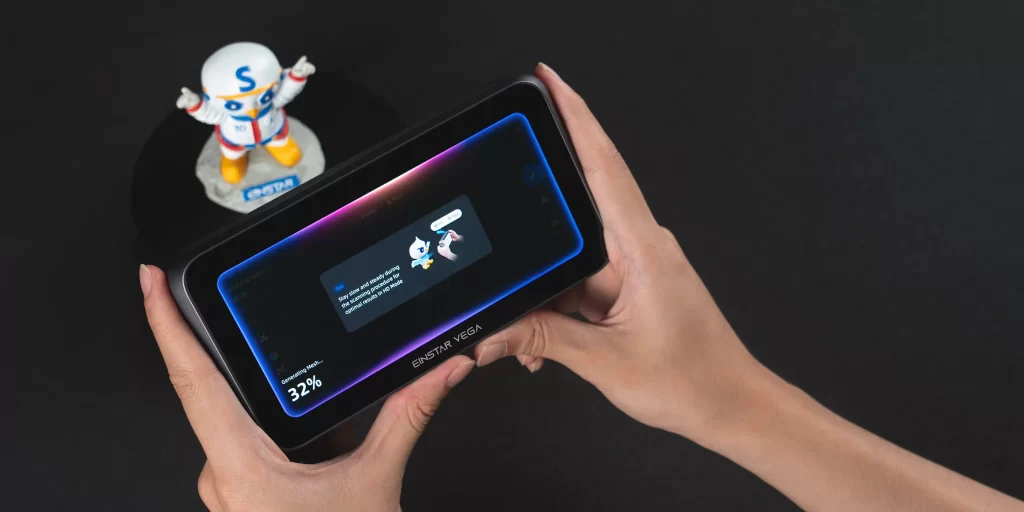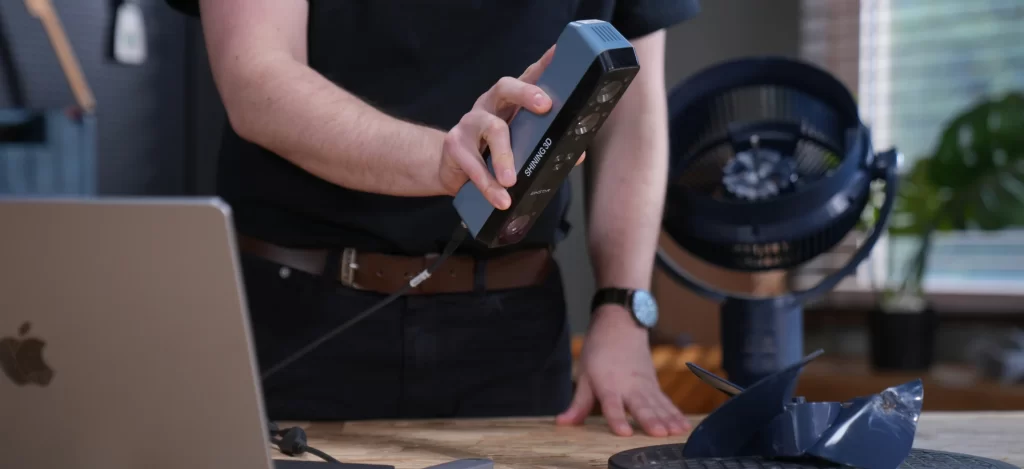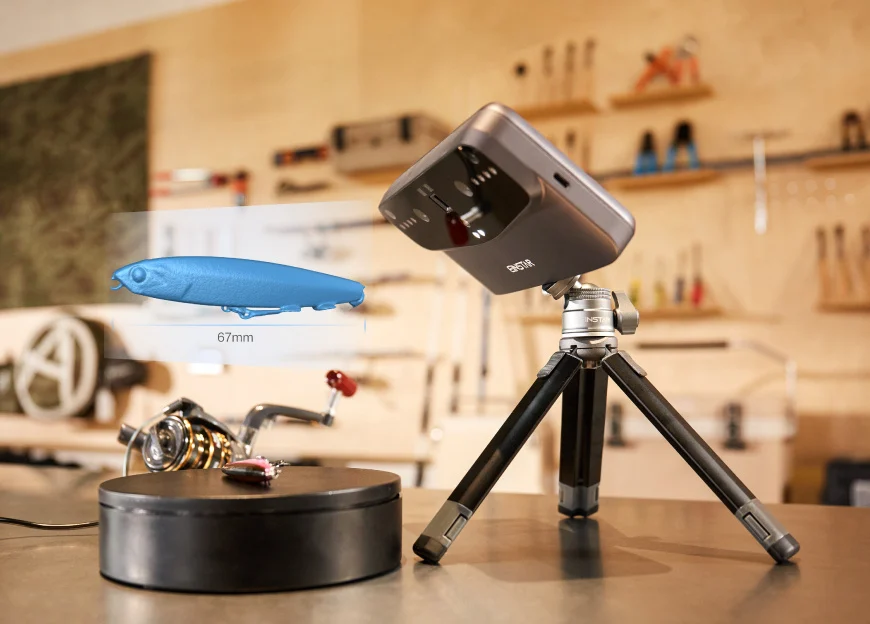A 3D scanner lets you capture an objects physical properties and reproduce them with your printer with precision you cannot achieve manually.
Broken parts, intricate sculptures, devices, accessories, and anatomies (such as arms and legs) become digital blueprints to recreate and modify. Iteration and prototyping speed up as you start software workflows with dimensionally accurate 3D scans.
Join us below to discover how 3D scanners can improve your 3D printing workflows.
Create precise replacements without contact
Measuring complex parts manually can lead to errors and consume time that scanners eliminate. Digital capture replaces callipers and rulers with millimetre-accurate data points recording every surface detail.
Perfect replication happens without physical contact or measurement tools touching fragile components. Automated dimension recording ensures consistent accuracy across multiple prints whilst preserving intricate geometries.
Parts fit together properly when dimensions remain consistent throughout the printing process. Complex assemblies require precise measurements to function correctly, something manual measuring struggles to deliver reliably.
Accelerate reverse engineering processes
Scanners capture complete geometries within minutes instead of the hours spent documenting and sketching by hand. Manual measurements and drawings become obsolete when scanners record every surface detail automatically.

You can modify scanned models directly rather than starting fresh, cutting development time while maintaining accuracy throughout workflows. Digital iteration replaces physical prototyping cycles, enabling faster refinement and testing processes.
Generate photorealistic colour reproductions
Built-in cameras capture textures (colours) alongside geometry during scanning. When printed with appropriate materials, colour information transfers directly to the final prints.
Artistic reproductions maintain authentic appearances, while functional parts display original surface patterns. Texture mapping preserves aesthetic details that traditional modelling overlooks.
Document items permanently in digital archives
Scanning transforms physical objects into permanent digital records, a beneficial technique for museums that preserve artefacts while allowing public access through printed reproductions.
Industrial documentation maintains component specifications for future manufacturing needs. Digital archives survive physical deterioration, ensuring information remains accessible indefinitely.
Integrate seamlessly with existing design workflows
Scanners complement CAD software design processes. For example, imported scans serve as references for new designs or modifications.
Hybrid workflows efficiently combine scanned elements with original modelling techniques, and integration reduces the learning curve for teams already familiar with design software.
Digital iteration replaces physical prototyping cycles, speeding development whilst maintaining design integrity. You can test variations easily before committing resources to final prints.
Einstar models offer versatile scanning
Einstar 3D Scanner (portable)
The Einstar 3D Scanner captures objects via infrared VCSEL technology, excelling at dark and reflective surfaces that traditional scanners struggle with.

Its built-in RGB camera preserves authentic colours while delivering 0.1mm point distances for precise detail.
One-click operation and intelligent algorithms simplify complex scanning tasks without compromising accuracy.
- Point distance: up to 0.1mm
- RGB colour capture: integrated
- Scanning speed: 14 fps
- Working distance: 160-1400mm
- Output formats: OBJ, STL, PLY, P3, 3MF
EINSTAR VEGA (built-in processing)
The EINSTAR VEGA provides standalone wireless operation and eliminates computer dependencies with built-in processing power, 32GB RAM, and 512GB storage.

Dual technologies combine VCSEL for distance scanning and MEMS for close precision work. Its magnesium construction weighs just 535g, making extended sessions comfortable whilst maintaining professional accuracy.
- Weight: 535g
- RAM: 32GB
- Storage: 512GB SSD plus 32GB eMMC
- Display: 6.4-inch 2K AMOLED
- Scanning modes: HD (100-300mm) and Fast (350-1500mm)
- Scanning speed: 15-20 fps
Conclusion
3D scanners are perfect for your 3D printing workflow if you create custom parts, replicate broken components, or require precise reverse engineering capabilities.
Time spent measuring and sketching objects manually becomes a thing of the past. Projects gain unprecedented accuracy via capturing details that traditional methods miss, ultimately improving print quality and expanding creative possibilities beyond manual limitations.




